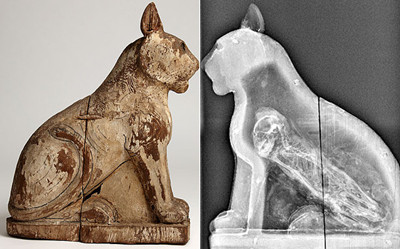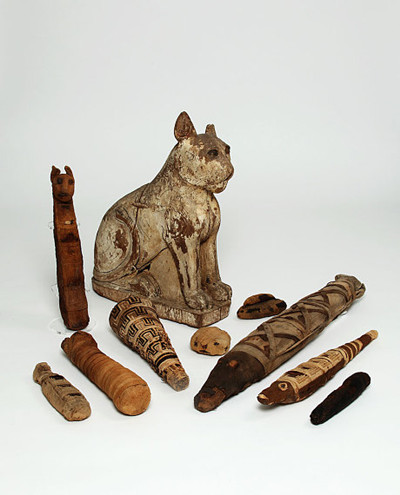(单词翻译:单击)
Scientists Ponder Over The Mystery Of The Missing Egyptian Animal Mummies
科学家探秘不完整的动物木乃伊
When researchers from the University of Manchester and Manchester Museum decided to take a peek inside some ancient Egyptian animal mummies using CT scans they expected to discover perfectly preserved remains. To their surprise, only one-third of the 800 specimens they examined actually contained complete skeletons. The rest housed partial animal remains, or even worse, just some mud, sticks, and eggshells.
曼彻斯特博物馆和曼彻斯特大学对一些古埃及动物木乃伊进行了CT扫描,期待找到完整的遗体。但令人震惊的是,扫描的800多个标本中只有1/3有完整的骨骼,剩下的仅有部分遗骸,有些更糟——全由泥土,木棍和蛋壳填充而成

Though surprised at how prevalent the practice was, the researchers were not completely taken aback by the missing remains. That's because, over the years, numerous archeologists have come across similar empty mummy shells. So did ancient embalmers regularly scam their customers? While that had been the consensus thus far, the Manchester researchers think otherwise.
科学家们虽然对当时这种做法的广泛流行感到惊讶,但并没有因此大惊小怪。因为过去几年也有很多考古学家频频发现类似的空木乃伊。难道是因为当时的木乃伊制作师投机取巧,欺骗顾客?虽然许多人认为如此,曼彻斯特的研究者却持相反意见。
To understand a plausible reason for the fake mummies, one first has to understand ancient Egyptian culture. While human mummies were meant to preserve bodies for the afterlife, animals were mummified for numerous reasons. Some were preserved because they had been beloved pets, others as a source of food for humans. Then there were the cult animals that were worshiped in life that had to be mummified. However, the most common reason was as an offering to the gods in return for answering a prayer.
为了给空木乃伊一个合理的解释,我们先要去了解一下古埃及文化。制作人类木乃伊是为来世保存好身体,但制作动物木乃伊就有许多其他原因了。动物木乃伊中有些生前是深受主人喜爱的宠物,有些是人死后供奉的食物,还有的是人们崇拜的神兽,但做为宗教贡品的占大多数。

According to University of Manchester researcher Lidija McKnight, who led the latest study, herein may lie the explanation for the 'fake' tombs. The Egyptologist thinks that as people ran out of animals to offer the gods, they began mummifying objects that the animals were closely associated with during their lifetime - things like nest material or eggshells. The researcher says that though forgery cannot be entirely ruled out, given how carefully the objects were wrapped, it is very likely that customers knew exactly what they were burying. Fortunately, the same is not true for the mummies that house human remains.
该实验的带头人——曼彻斯特大学的科学家Lidija McKnight说,该问题的答案也许还能解释那些“假墓穴”的存在。埃及古物学家认为,当祭祀用的动物供不应求时,古埃及人就用与这些动物的生活息息相关的物件来制作动物木乃伊,比如建巢穴的原料或者蛋壳。虽不能完全排除造假的可能,但考虑到这些物体均包裹认真,很可能顾客本身就清楚自己埋下来的是什么。不过幸运的是,这种情况并没有在人类木乃伊遗体上发生过。
译文属可可英语原创,仅供学习和交流使用,未经许可,请勿转载。


